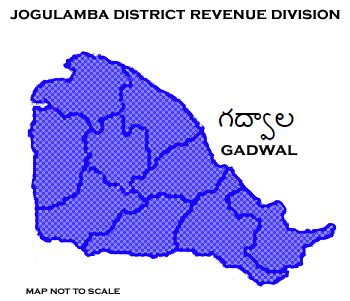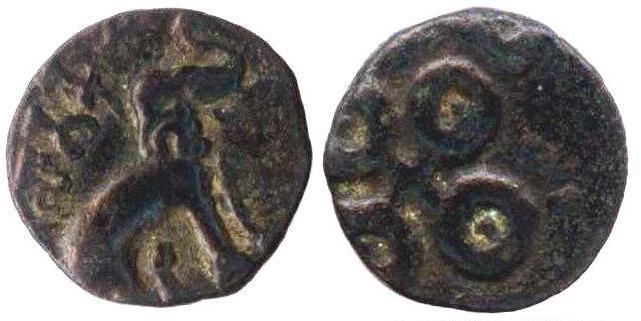|
Narayanpet District
Narayanpet district is a district in the Indian state of Telangana. Narayanpet is the district headquarters. The district shares boundaries with Mahbubnagar, Vikarabad, Wanaparthy and Jogulamba Gadwal districts and with the Karnataka state. History Historically "Narayanapeta" has been in the Palamoor region by the 6th Century B.C Later Nandas, Mouryas, Sathavahanas, Ikshwakas, Vishnukundinas, Badami Chalukyas, Kanduri Chodas, Kakatiyas, Yadavas of Devagiri, Cheruku kings, Vavilala kings, Munusuri Dyanasty, Bahamani Sultans, Vijayanagara Kings, Recharla Padmanayakas, Kutubshahis, Mughals and Nizam of Hyderabad ruled this area as the part of their Kingdom, this region was known as the land of the Cholas Mahbub Ali Khan Asaf Jah VI, the Nizam of Hyderabad (1869-1911 AD) was changed the name of "Narayanapeta" to NARAYANPET on 4 December 1890. Narayanapeta was the headquarters of the district since 1883 AD. the Golconda diamonds also including the famous Kohinoor Diamond com ... [...More Info...] [...Related Items...] OR: [Wikipedia] [Google] [Baidu] |
Districts Of Telangana
The Indian state of Telangana has 33 districts, each headed by a District collector. History Telangana region of Hyderabad State consisted of 8 Districts in 1948 when it was inducted in Dominion of India; they are Hyderabad, Mahbubnagar, Medak, Nalgonda, Nizamabad, Adilabad, Karimnagar and Warangal districts. Khammam district was created by bifurcation of Warangal district on 1 October 1953. Andhra Pradesh was formed by merging Telangana region of Hyderabad State and Andhra state on 1 November 1956. Bhadrachalam division and Aswaraopet taluka parts was merged in Khammam district from Godavari districts for better Administration. Hyderabad district was split into Hyderabad Urban District and Hyderabad Rural District on 15 August 1978. Hyderabad Urban District was made by 4 Talukas are Charminar, Golkonda, Mushirabad and Secunderabad Talukas which consist of only MCH area, Secunderabad cantonment and Osmania University. Hyderabad rural district was later renamed as Ranga ... [...More Info...] [...Related Items...] OR: [Wikipedia] [Google] [Baidu] |
Jogulamba Gadwal
Jogulamba district is a district in the Indian state of Telangana. The administrative headquarters of the district is located at Gadwal. The district shares boundaries with Narayanpet, Wanaparthy districts and with the state boundary of Andhra Pradesh and Karnataka. The district was carved out from Mahabubnagar district in 2016. The district is spread over an area of . the 2011 Census of India, the area within the district had a population of 609,990. Administrative divisions The district has one revenue division, Gadwal, and is sub-divided into 12 mandals. Mandals Demographics The district has a population of 6,09,990 of which 3,09,274 are males and 3,00,716 females. Urban population is 63,177 (10.36%). Scheduled Castes and Scheduled Tribes made up 120,639 (19.77%) and 9376 (1.54%) of the population respectively. At the time of the 2011 census, 90.09% of the population spoke Telugu and 7.49% Urdu as their first language. See also * List of districts in Telanga ... [...More Info...] [...Related Items...] OR: [Wikipedia] [Google] [Baidu] |
Narva, Mahbubnagar District
Narva () is a Mandal in Narayanpet district, Telangana Telangana (; , ) is a States and union territories of India, state in India situated on the south-central stretch of the Indian subcontinent, Indian peninsula on the high Deccan Plateau. It is the List of states and union territories of India b .... Villages The villages in Narwa mandal include: * Bekkarapalle * Chandragad * Eklaspur * Eerladinne * Jakkannapalle * Jangamreddipalle * Kalwal * Kanmanoor * Kothapalli * Kumarlingampally * Lankal * Mittanandimalla * Nagalkadumur * Narwa * Patherched * Peddakadmoor * Raikode * Rampur * Seepur * Undekode * Yamki Mandals in Telangana Narayanpet district {{Telangana-geo-stub ... [...More Info...] [...Related Items...] OR: [Wikipedia] [Google] [Baidu] |
Damaragidda
Damaragidda panchayat village in Narayanpet district, Telangana. The village of Damaragidda is the only village in the gram panchayat Gram Panchayat () is a basic village-governing institute in Indian villages. It is a democratic structure at the grass-roots level in India. It is a political institute, acting as cabinet of the village. The Gram Sabha work as the general bod .... The mandal is in the Narayanpet Assembly Constituency and Mahabubnagar Loksabha Constituency.2011 Village Panchayat Code = 207815, Demographics In the 2001 census Damaragidda Mandal had a population of 49,221. References {{Reflist Villages in Narayanpet district ... [...More Info...] [...Related Items...] OR: [Wikipedia] [Google] [Baidu] |
List Of Revenue Divisions In Telangana
Revenue Divisions are the administrative divisions in districts of some of the Indian states. These divisions are sub-divided into mandals. There are 71 revenue divisions in Telangana Telangana (; , ) is a state in India situated on the south-central stretch of the Indian peninsula on the high Deccan Plateau. It is the eleventh-largest state and the twelfth-most populated state in India with a geographical area of and 3 .... Revenue Divisional Officer (RDO) is the head of the division. List of revenue divisions There are a total of 72 revenue divisions in the state. The below table details the revenue divisions with respect to their districts. See also * List of districts in Telangana References External links {{DEFAULTSORT:Revenue divisions in Telangana Telangana-related lists ... [...More Info...] [...Related Items...] OR: [Wikipedia] [Google] [Baidu] |
Kohinoor Diamond
The Koh-i-Noor ( ; from ), also spelled Kohinoor and Koh-i-Nur, is one of the largest cut diamonds in the world, weighing . It is part of the Crown Jewels of the United Kingdom. The diamond is currently set in the Crown of Queen Elizabeth The Queen Mother. There are multiple conflicting legends on the origin of the diamond. However, in the words of Theo Metcalfe there is 'very meager and imperfect' evidence of the early history of the Koh-i-Noor before the 1740s, that can directly tie it to any ancient diamond. There is no record of its original weight, but the earliest attested weight is 186 old carats (191 metric carats or 38.2 g). The first verifiable record of the diamond comes from a history by Muhammad Kazim Marvi of the 1740s Invasion of Northern India. Marvi notes that the Koh-i-Noor as being one of many stones on the Mughal Peacock Throne that Nader Shah looted from Delhi. The diamond then changed hands between various empires in south and west Asia, until being ... [...More Info...] [...Related Items...] OR: [Wikipedia] [Google] [Baidu] |
Mahbub Ali Khan, Asaf Jah VI
Asaf Jah VI, also known as, Sir Mir Mahboob Ali Khan Siddiqi Bayafandi (17 August 1866 – 29 August 1911) was the 6th Nizam of Hyderabad. He ruled Hyderabad state, one of the Princely states in India between 1869 and 1911. Early life Mahboob Ali Khan was born on 17 August 1866 at Purani Haveli in Hyderabad, Hyderabad State (in present-day Telangana, India). He was the youngest son of 5th Nizam Afzal-ud-Daulah. Afzal-ud-Daulah died on 28 February 1869. On 29 February, he ascended the throne under the regency of Dewan Salar Jung I and Shams-ul-Umra III. Mahboob Ali Khan was two years and seven months old at that time. While Salar Jung I served as regent, Shams-ul-Umra III served as co-regent. Mahboob Ali Khan was the first Nizam to be exposed to western education. A special school under the guidance of Captain Claude Clerk was setup in the Chowmahalla Palace. The children of Salar Jung I, Shams-ul-Umra III and Kishen Pershad were his classmates. Besides English, he was also ... [...More Info...] [...Related Items...] OR: [Wikipedia] [Google] [Baidu] |
Nizam Of Hyderabad
The Nizams were the rulers of Hyderabad from the 18th through the 20th century. Nizam of Hyderabad (Niẓām ul-Mulk, also known as Asaf Jah) was the title of the monarch of the Hyderabad State ( divided between the state of Telangana, Marathwada, Marathwada region of Maharashtra and Kalyana-Karnataka region of Karnataka). ''Nizam'', shortened from ''Nizam-ul-Mulk'', meaning ''Administrator of the Realm'', was the title inherited by Asaf Jah I. He was the former ''Naib'' (suzerain) of the Great Mughal in the Deccan, the premier courtier of Mughal India until 1724, the founding of an independent monarchy as the "Nizam (title) of Hyderabad". The Asaf Jahi dynasty was founded by Qamar-ud-din Khan, Asaf Jah I, Mir Qamar-ud-Din Siddiqi (Asaf Jah I), who served as a ''Naib'' of the Deccan sultanates under the Moghul Empire from 1713 to 1721. He intermittently ruled the region after Emperor Aurangzeb's death in 1707. In 1724 Mughal control weakened, and Asaf Jah became virtually ... [...More Info...] [...Related Items...] OR: [Wikipedia] [Google] [Baidu] |
Kakatiyas
The Kakatiya dynasty (IAST: Kākatīya) was an Indian dynasty that ruled most of eastern Deccan region comprising present day Telangana and Andhra Pradesh, and parts of eastern Karnataka and southern Odisha between 12th and 14th centuries. Their capital was Orugallu, now known as Warangal. Early Kakatiya rulers served as feudatories to Rashtrakutas and Western Chalukyas for more than two centuries. They assumed sovereignty under Prataparudra I in 1163 CE by suppressing other Chalukya subordinates in the Telangana region. Ganapati Deva (r. 1199–1262) significantly expanded Kakatiya lands during the 1230s and brought under Kakatiya control the Telugu-speaking lowland delta areas around the Godavari and Krishna rivers. Ganapati Deva was succeeded by Rudrama Devi (r. 1262–1289) who is one of the few queens in Indian history. Marco Polo, who visited India around 1289–1293, made note of Rudrama Devi's rule and nature in flattering terms. She successfully repelled the attacks ... [...More Info...] [...Related Items...] OR: [Wikipedia] [Google] [Baidu] |
Vishnukundinas
The Vishnukundina dynasty (IAST: Viṣṇukundina) was an Indian dynasty based in Deccan Plateau, Deccan, which ruled modern Andhra Pradesh, Telangana, Odisha and parts of South India during the 5th and 6th centuries, carving land out from the Vakataka, Vakataka Empire. It played an important role in the history of the Deccan during the 5th and 6th centuries. The dynasty initially ruled from Indrapalanagara (in present day Nalgonda district of Telangana), and later shifted to Denduluru, and Amaravathi, Guntur district, Amaravathi. The area north of the Godavari River, Godavari, Kalinga (historical region), Kalinga became independent, the area south of the Krishna River fell to the Pallavas. The Vishnukundina reign came to an end with the conquest of the eastern Deccan by the Chalukya, Pulakeshin II. Pulakeshi appointed his brother Kubja Vishnuvardhana as viceroy to rule over the conquered lands. Eventually, Vishnuvardhana declared his independence and started the Eastern Chalukya ... [...More Info...] [...Related Items...] OR: [Wikipedia] [Google] [Baidu] |
Sathavahana
The Satavahanas (''Sādavāhana'' or ''Sātavāhana'', IAST: ), also referred to as the Andhras in the Puranas, were an ancient Indian dynasty based in the Deccan region. Most modern scholars believe that the Satavahana rule began in the late second century BCE and lasted until the early third century CE, although some assign the beginning of their rule to as early as the 3rd century BCE based on the Puranas, but uncorroborated by archaeological evidence. The Satavahana kingdom mainly comprised the present-day Andhra Pradesh, Telangana, and Maharashtra. At different times, their rule extended to parts of modern Gujarat, Madhya Pradesh, and Karnataka. The dynasty had different capital cities at different times, including Pratishthana (Paithan) and Amaravati (Dharanikota). The origin of the dynasty is uncertain, but according to the Puranas, their first king overthrew the Kanva dynasty. In the post- Maurya era, the Satavahanas established peace in the Deccan region and resis ... [...More Info...] [...Related Items...] OR: [Wikipedia] [Google] [Baidu] |



.png)
